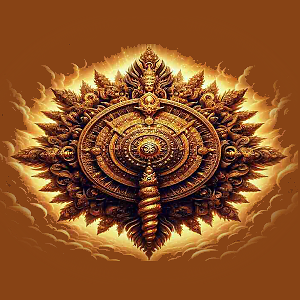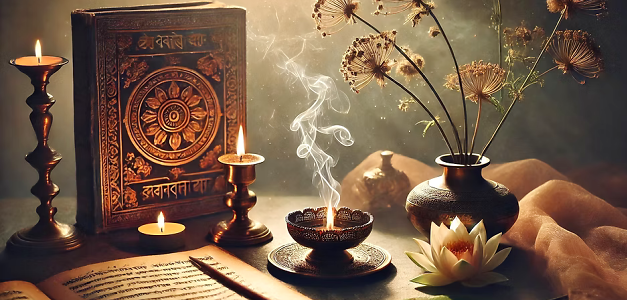Stotras - vedic sanskrit prayers to the Lord
Stotras (also called stavas or stutis) is a Sanskrit word: स्तोत्र stotra, which literally means hymn of praise, eulogy, extolling, song of glory. Stotra is typically a compilation of ślokas, or verses, from one or more vedic scriptures, such as the Ṛg-veda, that are sung or recited.
Stotra is a form of prayer to God that glorifies various aspects of the lords divinity and incarnations. In addition to general prayers for God, stotras describe mystical or deep spiritual experiences, or may petition God to forgive sins, remove difficulties, grant higher knowledge or bestow physical or emotional comforts. Vedic stotras contain special rhymes, alliterations, meters, and refrains. The texts are generally hymns that worship and praise a specific deity, or extol the glory of the divine.
The Effects of Chanting Mantras or Stotras on Body and Soul
Today’s scientists proudly say that sound is a form of energy. They have carried out many virational experiments and found out that sound and vibration are inseparable and every body vibrates in its own frequency.
Vedic scriptures tell about the forms of energy and most importantly sound and vibration. Vedas are called śrutis as they have been passed on from generation to generation in the form of oral tradition and memorization. In those Vedas, Upaniṣads and Saṁhitās we have innumerable mantras and stotras which have a specific pattern of sound-vibration which produce energy projections when reverberated. We have the basic sound of all OṀ and other bījakṣaras or seed sounds or seed syllables which release enormous energy waves when recited in a rhythm.
Mantras or stotras are written in only Sanskrit which is said to be the language of Gods and Goddesses. Sanskrit letters, each one has a presiding deity, dhyāna sloka and mantra to worship. This proves that the saints of ancient India were well versed in every aspect of science. Mantras and Stotras when recited daily increase concentration, amplify brain functioning, give us peace of mind and emotional stability. They energize our body and make us pure.
What is the difference between Śloka , Mantra , Stotra
Śloka, mantra, and stotra are all different forms of sacred verses or hymns used in scriptures and spiritual practices. Here's a brief explanation of each term:
1. Śloka: A Śloka is a verse composed of two lines, typically written in Sanskrit. It usually follows a specific meter and has a poetic and rhythmic quality. Ślokas are often used to convey spiritual, philosophical or moral teachings, describe deities or events, or express devotion to the lord. They are commonly found in texts such as the Bhagavad-gītā, Rāmāyaṇa, and Mahābhārata.
2. Mantra: A mantra is a sacred Sanskrit sound, word, or phrase that is repeated or chanted during meditation or spiritual practices. Mantras are believed to have a transformative and purifying effect on the mind and consciousness. They are often associated with specific deities or spiritual qualities. Mantras are considered to have spiritual power and are used to focus the mind, cultivate inner states of higher realisation, and invoke blessings.
3. Stotra: A stotra is a hymn or devotional composition dedicated to the lord or a special incarnation of God. Stotras are often used as a form of prayer, praise, or invocation. They are typically longer than Ślokas and may consist of multiple verses or stanzas. Stotras express devotion, gratitude, and reverence towards the divine and are chanted or recited as part of religious ceremonies or personal devotional practices.
While there are overlaps in their usage and purposes, the primary differences lie in their form, structure, and intended use. Ślokas and stotras are typically longer verses used for poetic or devotional purposes, while mantras are specific sounds or words repeated for spiritual purposes.
Chanting mantras or stotras from the sacred vedic hymns, a timeless practice deeply ingrained in Indian spiritual traditions, reduce stress, sharpen memory, and even boost the immune system. While stotras are primarily a form of devotional prayer, their benefits extend far beyond the act of praying, positively influencing physical, mental and spiritual well-being. Chanting stotras helps devotees strengthen their bond with the divine by invoking the presence of deities, seeking their blessings.
Vedic scriptures often mention that regular chanting of stotras calms the mind, reduces stress and fosters spiritual growth and enlightenment. Stotras guide the practitioner toward self-realization and liberation from the cycle of birth and death, by focussing the mind on on spiritual ideas. The rhythmic vibrations of stotras are believed to cleanse the aura, dispel fear and negativity and create a positive environment.



